Affiliate disclosure: This post may contain affiliate links. Please see our Privacy Policy.
Preserving with wood ash is a time-honored tradition, and there are traditional techniques for using wood ash to preserve eggs, meat, produce and even cheese.
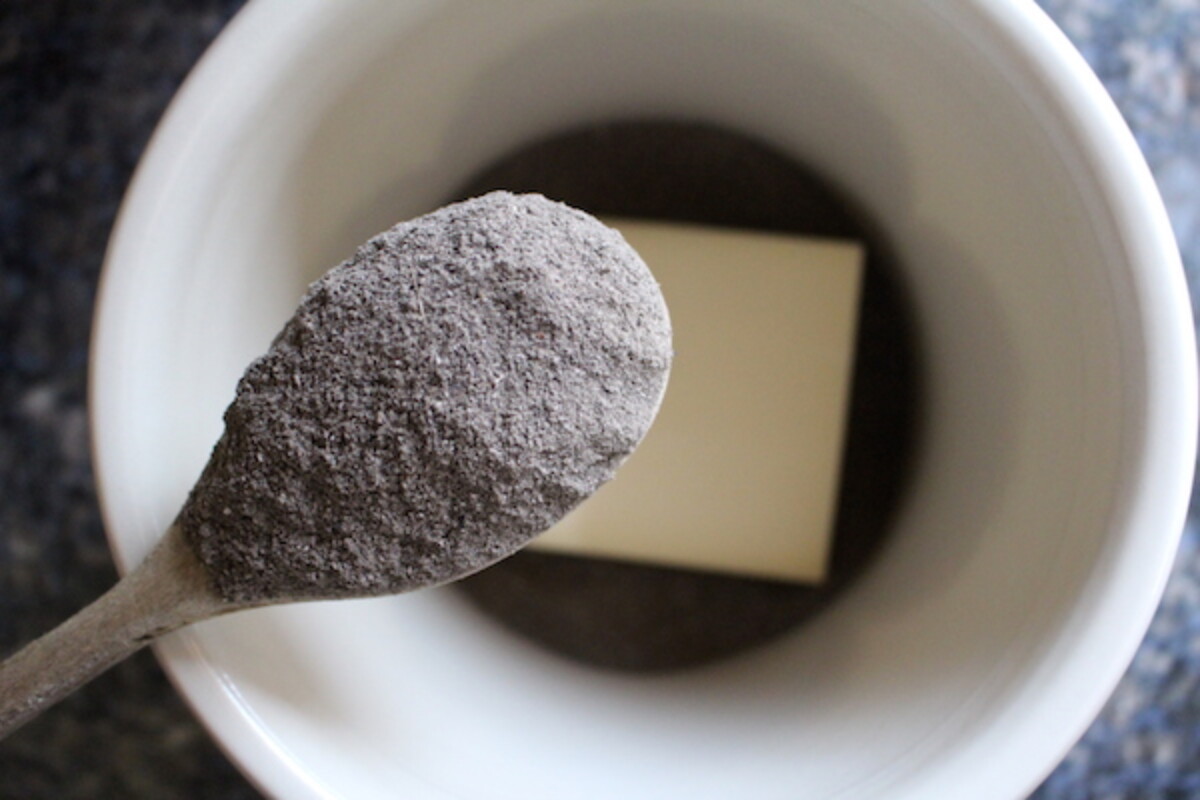
Project for the day?
Preserving cheese in wood ash….Or, more or less entombing a piece of gruyere in wood ash inside a stoneware crock…and then hoping for the best.
The book Preserving Food without Freezing or Canning describes a method for preserving cheese in wood ash:
“Take a piece of Gruyere that is not too thin. Put it in a stoneware pot and surround the cheese with one to one and a half inches of sifted wood ashes. Store the pot in the cellar. Three months later, the cheese will be as fresh as when it was stored.”
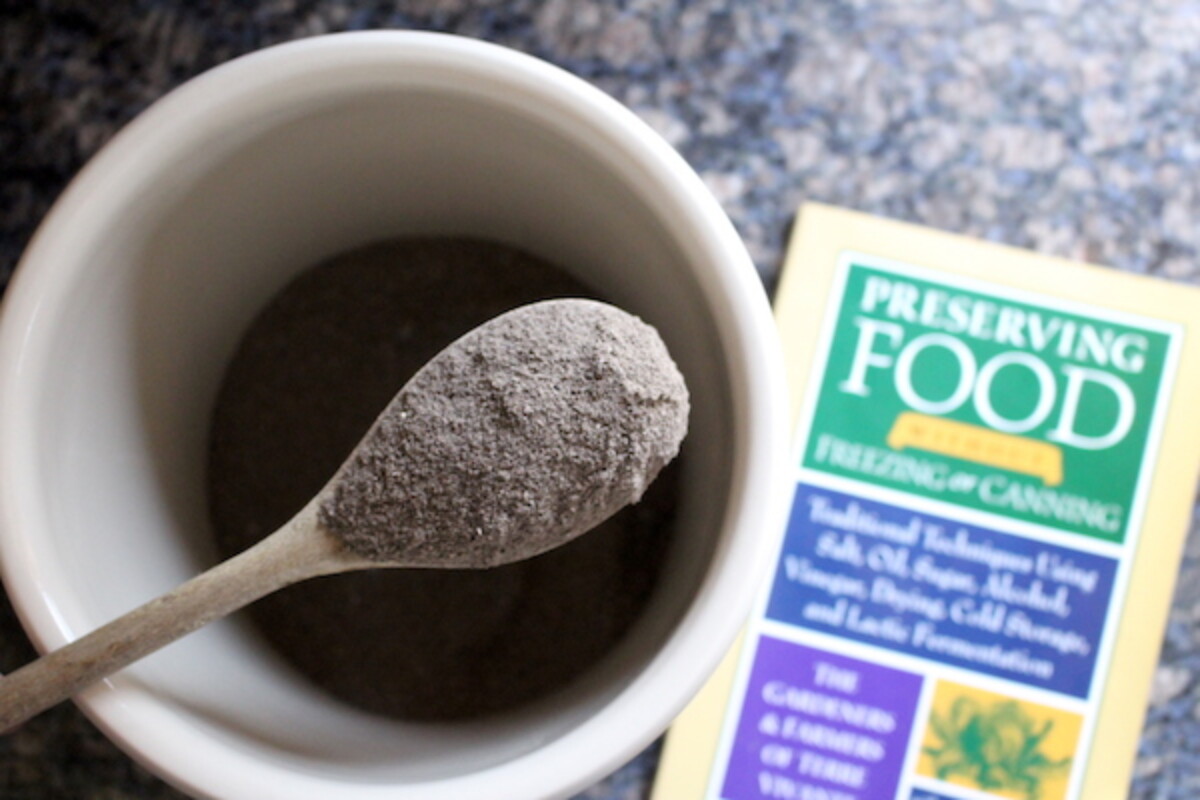
I’ll admit I was skeptical until I started doing a bit of research into all the ways that wood ash is used, especially in traditional food preservation. Wood ash in stoneware crocks was once a common method of egg preservation, and farmers in Africa have had good success storing tomatoes in wood ash for extended periods.
I even came across techniques that described how the Cherokee used hickory ash to preserve meat. I imagine, given that it was specific to hickory, the ash acted to flavor the meat at the same time.
Fair enough. Time to test out this traditional cheese preservation technique in my modern kitchen.
Preserving Cheese in Wood Ash
Step 1: “Take a piece of Gruyere that is not too thin.”
What makes a piece of cheese too thin? I guess we’ll find out. My piece is about 4” square and roughly 1 1/2” thick. I imagine if this works, the outside will need to be removed as the ash will create a new rind around cheese inside.
I assume that’s why they instruct a piece of cheese that’s not too thin because then you’d have nothing left at the end. This piece is pretty thin, but we’ll see.
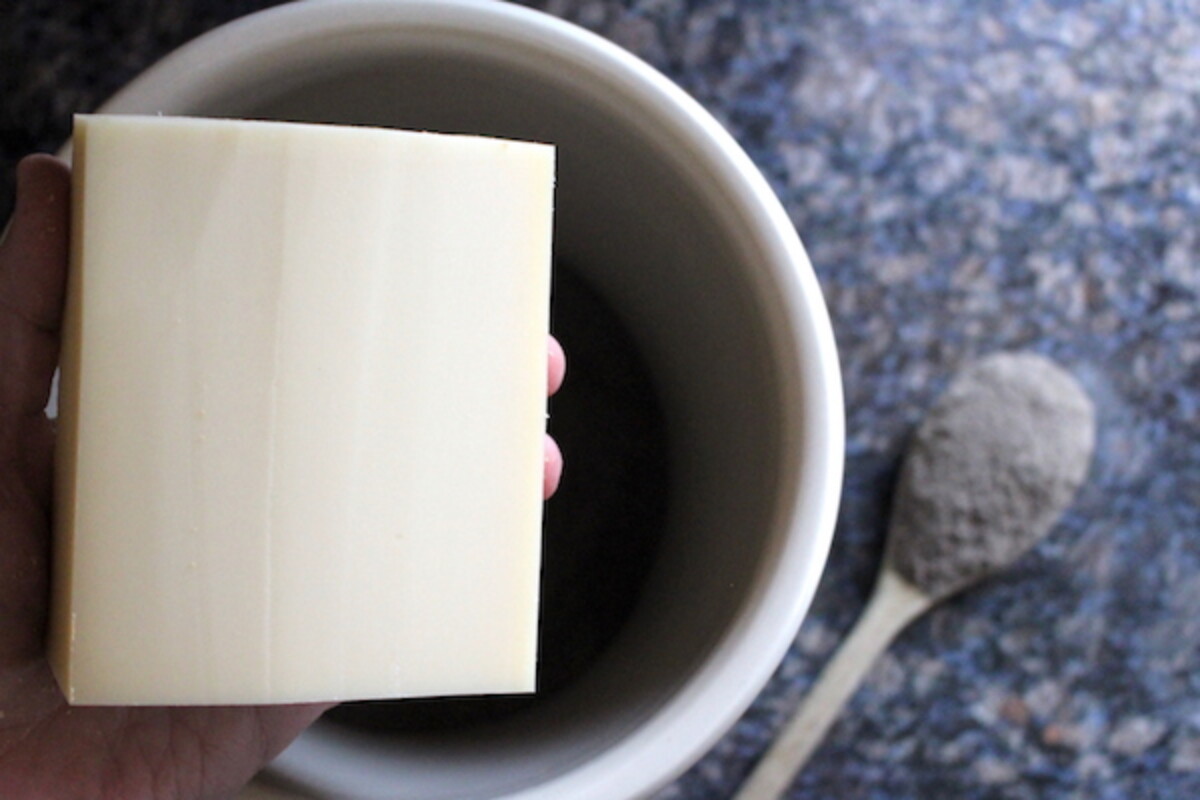
Step 2: “Put it in a stoneware pot and surround the cheese with one to one and a half inches of sifted wood ashes.”
I happened to have a 1-gallon stoneware crock from Ohio Stoneware that I’d purchased for making potted meat. We do a lot of food science around here, and potted meat, basically slow-cooked meat preserved in a crock under a layer of fat, has been on my list for a while.
They’re also really useful for making sauerkraut and Lacto-fermented pickles. That’ll all have to wait though because this piece of cheese is going in first.
Since I wanted to be on the safe side, so I ended up placing about 1 1/2 inches of sifted wood ash both above and below the cheese. As I started covering it, I’m thinking…goodbye my friend. You’re tasty now I’m sure, and I’ll see you again in 3 months.
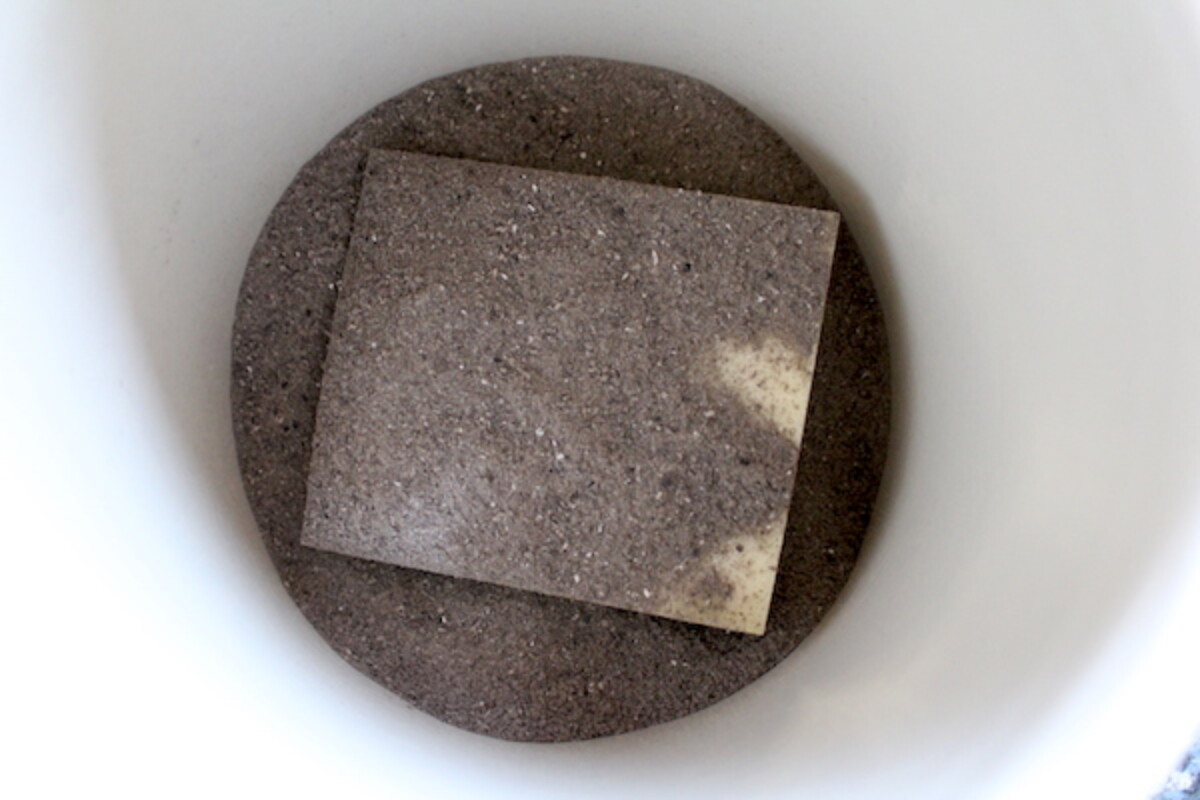
Step 3: “Store the pot in the cellar. Three months later, the cheese will be as fresh as when it was stored.”
There’s still plenty of space in this crock, but I’m just going to store this single piece of cheese surrounded by wood ash. The crock has a stoneware lid, and I put it onto the crock. There’s no mention of lidding the container, but there’s also no mention of not lidding it.
Given that rodents could be an issue, and were probably a bigger issue historically, it only makes sense to put on the lid. Generally, stoneware crocks come with fermenting weights too, but I’ve just set that to the side.
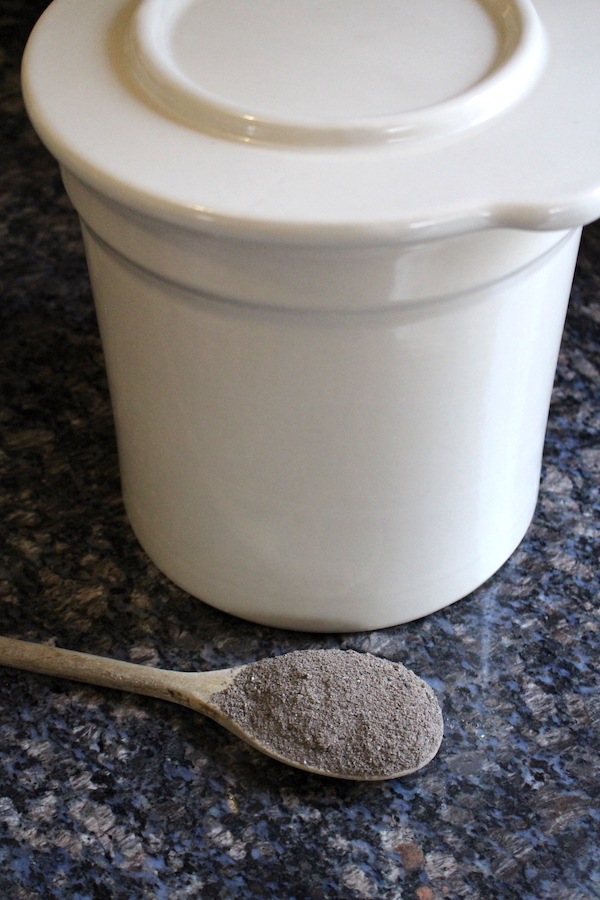
I took the crock down to my basement and left it undisturbed for 3 months. Generally, my basement says about 50 degrees F year-round, so it’s a nice cool spot.
It’s aging down there alongside a batch of Farmhouse Cheddar from an 18th Century Recipe, and a wheel of homemade Colby cheddar.
I recently read about waxing store-bought cheese at home and aging it in a cool location. Since it’s time for all things cheese on my basement shelf, I also went ahead and waxed a few blocks of local Cabot cheddar.
It’s yet another method of keeping airflow and contaminants away from the outside of cheese, and I’ll be interested to see if it works better or worse than wood ash.
Did it work?
Time for the big reveal…did it work?
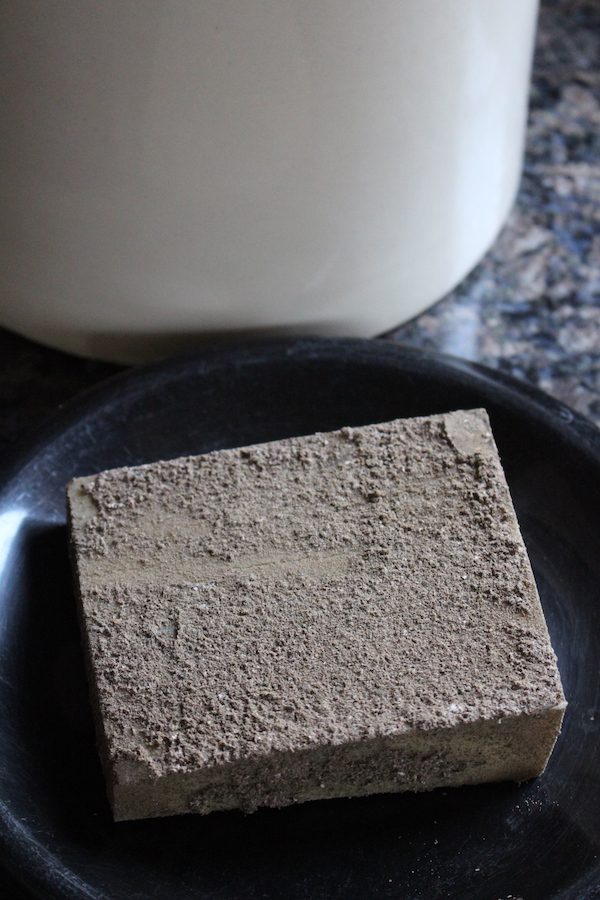
Yes! Three months later the cheese is delicious, but not at all what I expected.
I reached in and pulled the cheese out of the ash, and there was a covering of ash attached (as expected). I assumed that I’d need to cut off some kind of rind from the outside, formed by contact with the ash. Not so. The ash just dusted right off.
Small bits of ash stayed on the cheese inside of cracks in the surface, but there was no discernible rind on the outside.
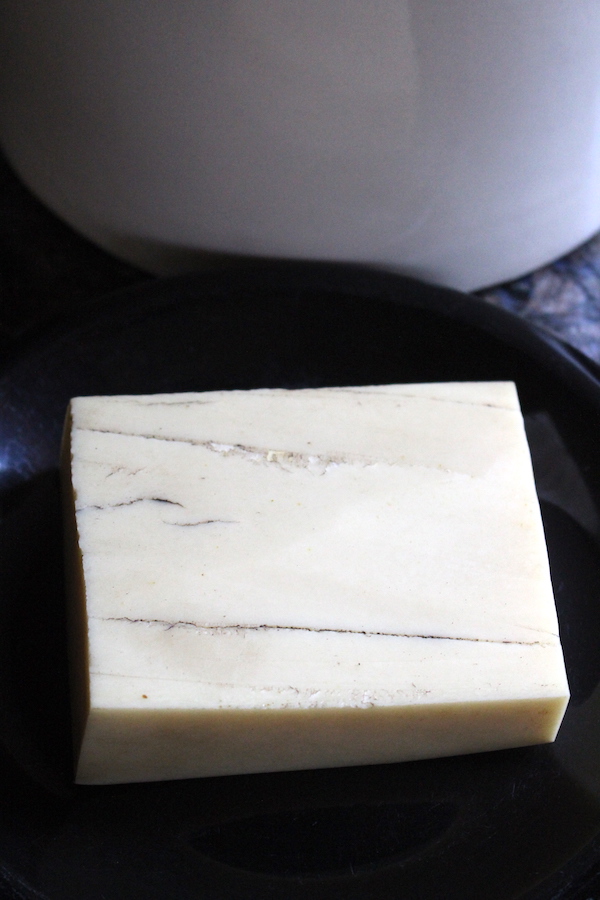
The real question is taste…
I sliced off a piece and tasted it, and honestly, the flavor had improved with storage. The cheese was dryer, and harder now, but it had exquisite flavor. Not surprisingly I suppose, it was like the difference between fresh cheese and one that’s been aged.
There must be a technical term, but I absolutely love aged cheddar and parmesan that’s developed those little “flavor crystals” inside. Basically, dry salty sections that almost have a crunch to them. I’ve only tasted it in 2+ year aged cheddar, and in the fresh parmesan that I ate while studying in Italy long ago.
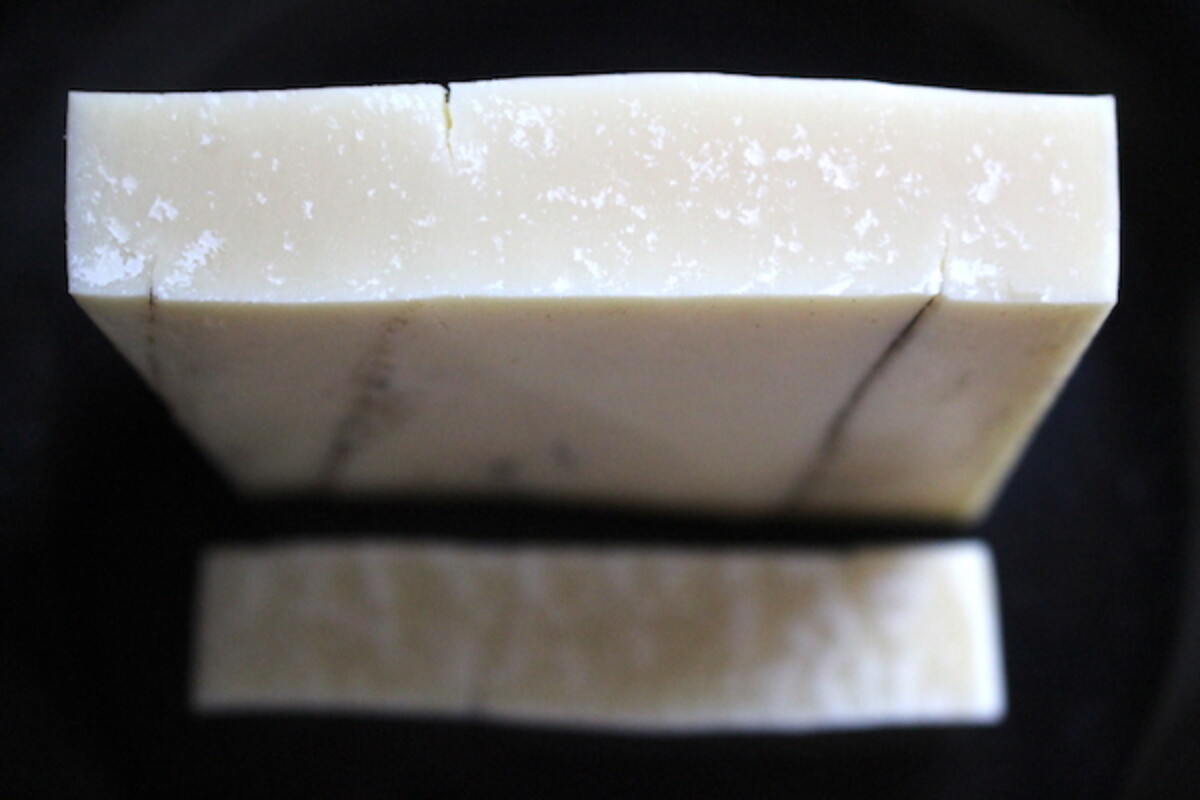
I compared the flavor of this cheese to the waxed cheese I had stored at the same time. Of course, the waxed cheese was cheddar, so it’s not a direct comparison. Waxing worked to preserve the cheese as well, and the cheddar had also improved in flavor.
Unlike the gruyere in wood ash, it hadn’t dried at all, since the moisture was maintained by the wax. It also didn’t develop that flavor crystal-like texture, but was creamy and smooth instead.
Both the wood ash cheese and the waxed cheddar were delicious in very different ways. The end result for the gruyere is that it’s now a hard grating cheese with exceptional flavor, and I basically have something that tastes more like aged parmesan than fresh gruyere.
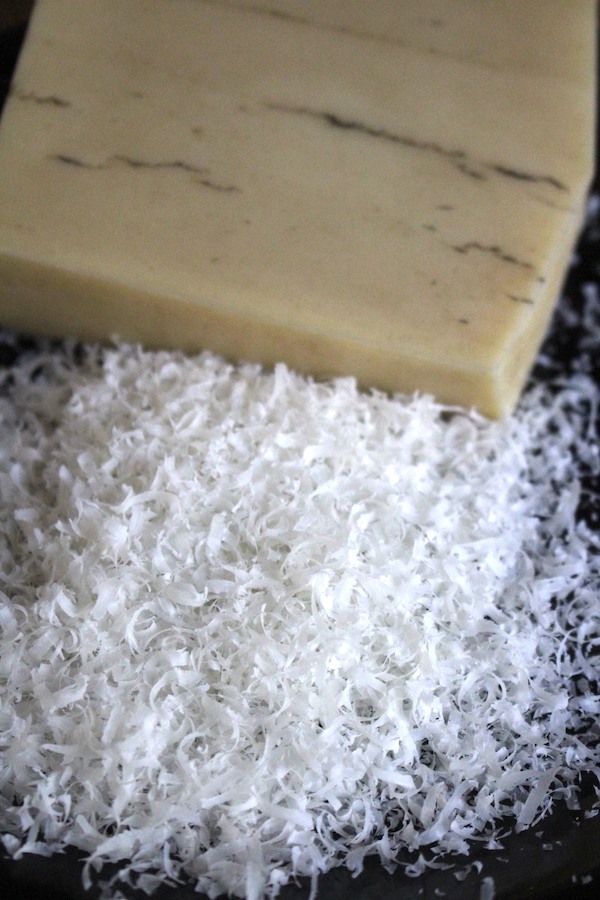
All in all, I’m very happy with the results.
This stoneware crock is moving on to other food preservation projects, but I’m pretty sure the whole thing would work well enough in a mason jar. If the cheese was in 3” cubes they’d fit right through the opening of a half-gallon mason jar, and you could fit quite a few in that way.
If you do try this, be sure that your ashes are completely clean hardwood ashes. Namely, be sure you haven’t burned any pressure treated wood, bits of plastic or god knows what else in your wood stove.
And obviously, results may vary, and use our own best judgment. You’re responsible for your own health, and just because it worked in my house doesn’t mean it won’t make you sick. Preserve at your own risk.
More Historical Food Preservation Ideas
The book Preserving Food without Freezing or Canning describes a lot of unique food preservation practices, and I’m looking forward to testing out more of them and sharing the results with y’all.
Beyond just food preservation, it also discusses methods to change the flavor of foods in storage. For example, we already root cellar apples for winter use, but the book suggests storing them with elderflowers. Apparently, the elderflowers impart a flavor into the apples during storage, giving them a tropical flavor like pineapple.
I know that without global shipping, a bit of tropical flavor mid-winter would be pretty exceptional. There’s no mention of a specific apple variety, but I’d imagine it was a selection of winter storage apple varieties.
If you’d like to keep reading about my other historical food preservation research, here are a few more options to keep you reading:
- 30+ Ways to Preserve Apples (Historical and Modern Techniques)
- Salt Cured Duck Breast
- 8 Ways to Preserve Herbs
- Salt Cured Egg Yolks
- 100+ Canning Recipes from A to Z
- Preserved Lemons (Lemon Confit)
- How to Render Leaf Lard
- 100+ Dehydrator Recipes
- How to make Worchestershire Sauce
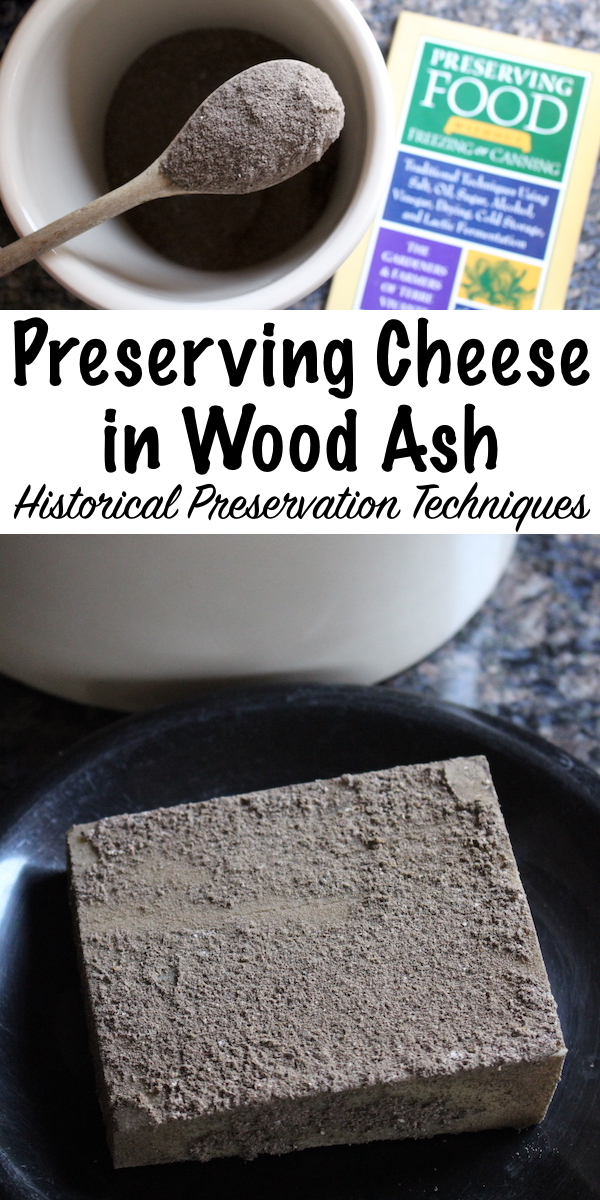

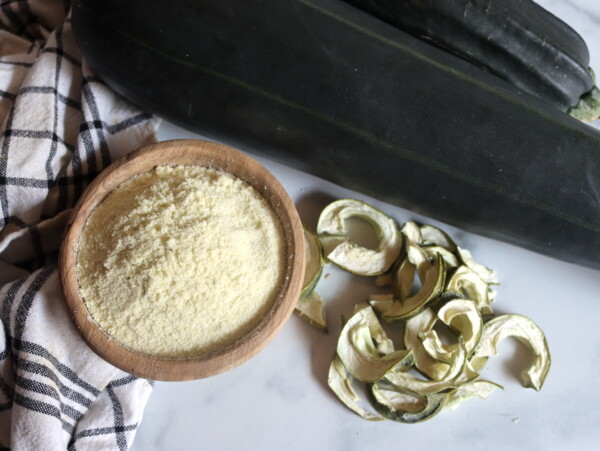

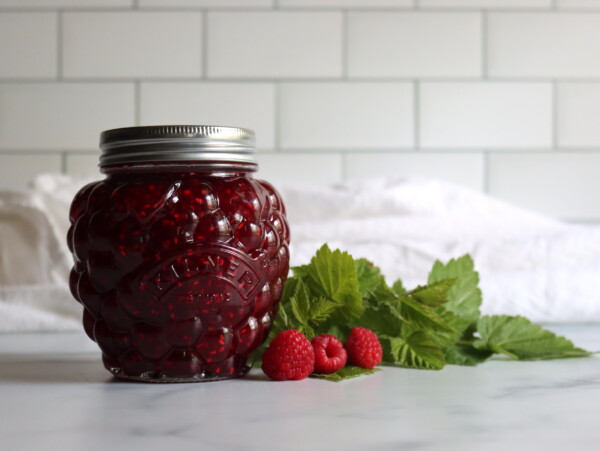










My wood ash is from an Australian softwood, Acacia Dealbata, Why do you specify only hardwood?
I’m not exactly sure of the reasoning behind using the hardwood ashes, that is just the standard recommendation. You could always experiment with it though. Just be sure that whatever wood you are using is food safe.
Wow! Super cool.
Do you know if this would work for softer cheeses?
I’m a home cheese-maker and have boatloads stored in my freezer, but would love to get it into shelf-stable storage instead.
Thanks for the posts! – I just subscribed.
That’s a good question, but sorry to say I honestly don’t know the answer.
These are all things I like to do.
It’s so much fun isn’t it?
I am old enough to be your grandma but we have a lot in common or of interest. I am glad I found your blog. I will try cheese in ashes. One day I want to try the bark flour. I do flours from veggies right now. I just finished Tarhana and powdered it. I have pemmican ready to go as we are having a pemmican challenge and pot luck. I just did eggs in lime water and finished a loin that I seasoned, 10 days, and cooked, turned out great. Have three others hanging but a little different recipe. Do you have any way of putting apples in a barrel and preserving them? They were in a liquid I was told. I tried it once but my apples blew up like sponges? Anyway thank you. I have lots more on my plate and love it.
Absolutely wonderful, you’ve got so much going on!
As to apples in a bucket in liquid, I think you’re looking for brined apples. Try this process: https://www.beetsandbones.com/russian-brined-apples/
I did the cheese in the wood ashes and also 5 small tomatoes but then I started to question myself. If ashes are mixed with water you get lye. Cheese has oil so wondering if it would make lye? I love trying new things and preserving is on the top of my list but now I am nervous. I took everything out of the ashes.
Really interesting. The crystals in aged cheese are from tyrosine, an Animo acid in the cheese that crystallizes over time.
You are better off preserving larger pieces of cheese rather than cubes in a mason jar, you’ll have more usable cheese at the end! Thanks for a cool experiment
Looks like a great technique for off-grid cheese storage. I will have to read the book you linked to. Thanks for sharing!
I LOVE your site! We heat solely with wood and always have lots of ash. I imagine that it would remain useful for the garden even after first being used for preservation purposes, making wood ash very versatile. This seems a relatively easy thing to do, too. Did you use store-bought gruyere or homemade? Can homemade hard cheeses be put straight into the ash for preserving or do they need to go through the regular air-drying first?
We do make cheese, but this was store-bought gruyere just so it could easily be replicated. You’d have to complete the cheese drying/aging before putting it into the wood ash (I assume).
Totally new information to me! Thanks for a great experiment and post!
The Cherokees used both oak and hickory ashes for preservation. They used oak ashes for making lye hominy. Modern accounts of Cherokee bean dumplings state that the dumplings must be made with oak ashes for the best flavor.
Sending loads of gratitude. I have mold allergies and if this cpuld, someday, allow me to make my own cheese, it will be a blessing.
I knew the hickory ash one, but the bean dumpling flavoring one is totally new to me. Looking it up now, thanks!
What a wonderful experiment! I need to find this book about old ways to preserve food. Thank you for sharing.